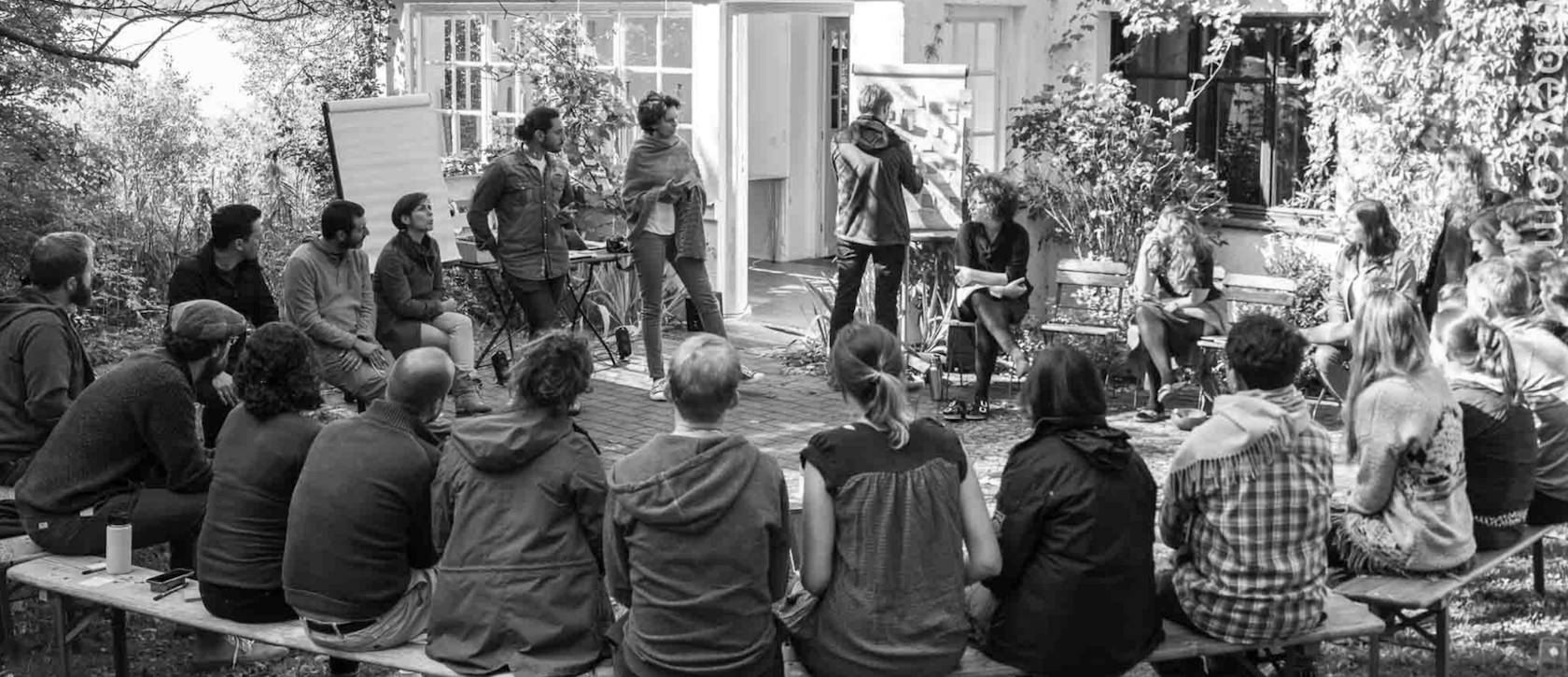
1 de Abril de 2025
Explora Artículos The Future of Recruitment
diciembre 3, 2017 9 min
As companies are transforming towards outside-inside open models, employer branding and brand experience are inevitably blending into one.


Up to half of new hires leave within the first twelve months. The reason is simple: the 6–8 weeks of contact with a company of a standard recruitment process is not enough to develop a cultural rapport between candidate and company. In short, the new hire starts and only then finds out if they ‘fit’ (1)
How to attract and retain talent? How to find the right candidates? Do they possess the right skills? Do they fit with our company’s culture? Will they be engaged and their expectations fulfilled? Will they find the right environment to deploy their potential?
In addition to the challenge of attracting and retaining talent, there is the question of onboarding:
> It takes between 12 and 18 weeks for a new employee to reach optimal productivity. (2)
> In average, a departing staff member costs his or her employer £30,000, mainly due to the loss of output from the departure of the previous employee and until the new employee is up to speed. (2)
> Costs of a disengaged employee can be calculated as 34% of the salary. Not to mention the loss of opportunity and the negative impact on others. (3)
In any case, while the costs to the employer are significant, what really matters in the onboarding process is whether the new team member will find the right environment to flourish, be creative, be productive, build meaningful connections and make an impact. When this happens, the benefits for all stakeholders (person, organisation, society) are on an order of magnitude that makes the previous figures irrelevant.
Cultural fit and aptitude trump hard skills every day of the week
In my experience as employer and team leader, cultural fit and aptitude trump hard skills every day of the week. After 18 years of professional life I have worked for six traditional companies and one networked organisation: OuiShare. Here the ‘employer branding’ process is radically different to anything I have experienced before and it provides a very reasonable solution to the cultural fit problem.
“I have spent a good amount of time in this company. I have worked hard but it turned out not to be as I thought it would be, I don’t think we are making much of a difference, I am not fulfilling my potential, etc.” — the list goes on. Then one starts looking around, talking to people, checking out some companies until one discovers one or two positions that look promising.
That’s when the level of involvement with the new potential employer starts, by doing some desktop research on what they do, on what they stand for and so on.
The whole recruitment process happens in a matter of a few weeks: interview, maybe some more research, interview, a walk around the office, job offer, start date is set, and before you know it, you are 100% committed to this new company.
“Cultural fit is the likelihood that someone will reflect and/or be able to adapt to the core beliefs, attitudes, and behaviours that make up your organization. Employees who fit well with their organization, co-workers, and supervisor had greater job satisfaction, were more likely to remain with their organization, and showed superior job performance.”(4)
If the fit is poor, the new employee will sooner or later feel frustrated and disengaged — 67% of US workers are either not engaged or actively disengaged at work (3). If not enough people in your organisation are actively engaged with their jobs, talent retention is the least of your problems. It is quite likely that you will suffer loss and distortion of your company culture. 17% of American workers are actively disengaged, meaning that they are “unhappy and unproductive at work and liable to spread negativity to coworkers”.
I can only see two ways how a ‘candidate’ can get a good grasp of an organisation’s culture, to understand how things are done, the values and the application of those values, the mission, the people, and how they all relate to each other:
A_
Allow for the candidate to create connections with a good number of people — not just HR people and line managers, but also colleagues, partners and clients, and
B_
Provide time to develop those connections, and to actually learn how things work.
I discovered OuiShare in May 2016 and I started reading some articles, attending to small events and meeting people from the community. For a few months I was just learning what was going on and what kind of projects were underway. Slowly but surely I got to know who was doing what. I had started onboarding myself without even realising.
During the first few months of experiencing OuiShare I had discovered which projects I liked and I had a rough idea of how I could provide value to them. That’s when I found the confidence to offer my help to one of those projects and started to contribute actively, finally putting value into the network.
During that first project, I boosted my connections and accelerated my learning, while dedicating to it a fraction of my ‘work time’. In addition to my OuiShare contributions, I was developing my consultancy services on knowledge sharing and collaboration and I was also working with a tech company developing a new use case for their software. Everything I was learning in OuiShare was helping me with those two activities.
Most importantly, during that first project I got exposed to how things are done in OuiShare and I learned about the strengths and weaknesses of this organisation, while most new employees joining an organisation are not able to learn about those until after they have started their new employment.
I had spent a good couple of months providing value to the best of my capacity and other members of the network got to know me and to experience how I work — I was building reputation. All in all, I discovered that OuiShare and I were a good fit.
At the end of that first project I had the end of the honeymoon (nothing is perfect) and I took some time to reflect whether I liked OuiShare and, if so, what other projects would make sense for me. While there is so much I still did not know, I had a better picture of how I could maximise my value and contribute to the organisation.
This is my experience in OuiShare, going from curious to very engaged member because there is a very good cultural fit and because there is much synergy between OuiShare’s mission and activities and my own. For instance, OuiShare works on the basis of dynamic leadership and emergence. I do believe this is a great way of empowering individuals and giving them space to create and be engaged. I also understand that this does not work for everybody, as some people prefer a more centralised structure. In such cases, it is best to find out gradually before both parties invest a lot of time and hope.
Everybody in the network has had a variation of this experience, some stay more passive, others are highly active, and many others find out that they simply don’t like it.
The key point here is that it is up to the individual to figure things out and discover how to best provide value. This is for me the most natural ‘recruitment and onboarding’ process and I can’t think of a better way to ensure cultural fit.
When I look at the bigger picture, these new ways of attracting and onboarding talent clearly point to the brand experience. Quite often we associate brand experience to a marketing thing, as something we actively push onto the market and onto our clients.
Brand experience now engulfs everything in an organisation: how clients, partners and members of the organisation experience the mission, the values and the projects
My experience over the last year tells me that brand experience now engulfs everything in an organisation: how clients, partners and members of the organisation experience the mission, the values and the projects.
Why are ‘brand experience’ and ‘employer experience’ two different things? It seems inefficient to me, even phoney.
Organisations are becoming more transparent by the day. It doesn’t matter whether they are happy with this or not, transparency is here to stay. As Don Tapscott puts it: “if you are going to be naked, fitness is no longer optional” (5).
Collaboration networks are complex and the outside-inside is not as clear as it used to be. The boundaries of organisations are ever more porous. I find that radical transparency makes everything much easier. I do practice it. I don’t care whether you are a potential client or a potential collaborator, I am open to discuss how we can best collaborate to create value.
Going back to my point, one consequence of this transparency is that clients, partners and potential new employees get a similar experience. They can all see your strengths and weaknesses and they can check whether your actions are where your mouth is.
References
The True Cost of Recruiting. Quarsh Agency
The Cost of Brain Drain. Oxford Economics, 2014
State of the American Workplace. Gallup, 2017
Recruiting for Cultural Fit. Katie Bouton, HBR 2015
Four principles for the open world. Dan Tapscott, TED Talk 2012
_________
Manel Heredero is consultant at Ideas for Change and Connector at OuiShare. His focus is on knowledge management, collaboration, collective intelligence, and strategic learning.
¿Te ha gustado?
¿Ya eres usuario? Inicia sesión aquí